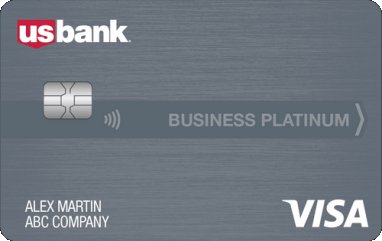The Best Cards For A Business Credit Card Balance Transfer

A business credit card balance transfer can be a powerful tool that can transform a company’s financial health and operational efficiency. In fact, this strategic technique can help a business reduce costs, consolidate debt and increase cash flow.
In this blog post we will take a look at the 5 best credit cards for business balance transfers on the market. We will clearly explain what a balance transfer is, what it entails and the substantial advantages it holds for businesses. By understanding the full scope of benefits and how to effectively employ this strategy, businesses can unlock a powerful tool for enhancing their financial operations and overall growth.
So let’s spotlight the 5 best business balance transfer cards
Five Best Business Balance Transfer Cards
1. PNC Visa® Business Credit Card

0% Intro APR: For 13 billing cycles on balances transferred within 90 days.
Balance Transfer Fee: 3% or $5, whichever is greater.
Unique Benefit: Offers a longer 90 day window for balance transfers, providing flexibility for debt payoff strategies. No annual fee but lacks rewards.
Advantage: Suited for businesses focusing on paying off existing debt without distractions.
2. U.S. Bank Business Platinum Card

0% Intro APR: For 18 billing cycles.
Balance Transfer Fee: Applicable during the 0% introductory period.
Unique Benefit: Offers tools like Visa Spend Clarity for tracking expenses and the option to divide eligible purchases into monthly payments without interest via the ExtendPay® Plan.
Advantage: Ideal for transferring significant balances and benefiting from a long interest free payment period with no annual fee.
3. U.S. Bank Business Triple Cash Rewards World Elite Mastercard®

0% Intro APR: On purchases and balance transfers for 15 billing cycles.
Balance Transfer Fee: Charged during the introductory period.
Unique Benefit: Earn up to 5% cash back on eligible business expenses and an annual $100 statement credit for recurring software subscriptions. Offers cash back rewards alongside the balance transfer feature.
Advantage: A great option for businesses looking to earn rewards on their spending while also taking advantage of the balance transfer offer.
4. Edward Jones Business Plus Mastercard®

0% Intro APR: On balance transfers for the first 12 billing cycles for transfers made in the first 60 days.
Balance Transfer Fee: 0% intro fee for transfers in the first 60 days, then 3%.
Unique Benefit: Offers Loyalty Points® on purchases, with increased points for spending over $40,000 annually. Designed for Edward Jones clients to maximize rewards alongside managing debt.
Advantage: Best suited for Edward Jones clients looking to combine rewards earning with a balance transfer option.
5. M&T Bank Business Rewards Credit Card

0% Intro APR: For 12 months on balance transfers.
Balance Transfer Fee: 4% or $10, whichever is higher.
Unique Benefit: Offers rewards on purchases, including gas stations, office supply stores, cell phone service providers, and restaurants.
Advantage: A solid choice for businesses in the mid-Atlantic states looking to earn rewards while also consolidating debt.
Now with these cards in mind, let’s delve into what makes a business credit card balance transfer such a strategic financial move
What is a Business Credit Card Balance Transfer?
When a company decides to transfer the amount owed on one business credit card to another, it’s engaging in what’s known as a business credit card balance transfer. In truth, this isn’t just moving debt around; it’s a calculated decision often made to take advantage of lower interest rates or better terms that the new card offers. In fact, this strategy goes beyond merely managing debt and can strategically position the business for better financial health. From lowering costs to improving the flow of cash within the company, the benefits of executing a well-thought-out balance transfer are vast and valuable.
The Process of a Business Credit Card Balance Transfer
Kicking off a balance transfer for your business credit card is a bit like finding your way through a financial puzzle. The idea is to get a handle on your debt and maybe even improve your cash flow situation. Think of it as following a map with several key stops along the way, each one getting you closer to a place where your business’s money matters are in better shape. As we walk through what these steps are, I’ll share some straightforward tips and insights, the kind you’d get from a friend who’s been through it before. Let’s tackle this step by step, focusing on making things better for your business’s bank account.
1. Look Closely at Your Business Finances:
- Evaluate Your Debt: Start by totaling up the debt on all your business credit cards. It’s just like taking inventory but of what you owe.
- Review Your Cash Flow: Check your monthly cash flow—how much money comes in and goes out. This will help you figure out how much you can realistically pay towards the debt each month.
- Check Your Credit Score :Your credit score matters here. A higher score usually opens the door to better balance transfer deals.
- Consider Other Debts: Don’t forget about any other loans or money your business owes. It’s all part of the big picture.
2. Find the Best Balance Transfer Card for Your Business:
- Finding the Ideal Card: Start your search by looking into credit cards that are made for balance transfers. You want to find ones that give you a 0% APR for a good stretch of time on both new purchases and any balances you move over. This period where you’re not being charged extra interest is golden because it lets you chip away at your debt without it growing.
- Weighing Your Options: When you’re comparing cards, focus on these details
- Length of the 0% APR Period: In fact, the longer, the better. More time without interest means more opportunity to reduce your debt.
- Balance Transfer Fees: Firstly, check if the card charges a fee to move your balance over. This is typically a percentage of the amount you’re transferring. Secondly, aim for cards that keep this fee as low as possible or don’t have one at all.
- Extra Benefits: Look into any other perks the card might offer, like points, cashback, or travel rewards. These can be nice bonuses once you’ve got your debt under control.
3. Apply for the New Credit Card:
- Creditworthiness: Before applying, assess your creditworthiness. Generally, you’ll need good to excellent credit to qualify for a balance transfer card.
- Application Process: Apply for the chosen credit card. Once approved, you’ll receive your new card along with instructions on how to proceed.
4. Arranging the Balance Transfer:
- Reach Out to Your New Card Company: Let them know you’re ready to move a balance over. In fact, you’ll need to give them the specifics like which account it’s coming from, that account’s number, who the issuer is, and how much you’re transferring.
- Kick Off the Transfer: After you’ve given them all the details, the credit card company takes over. They’ll get in touch with your old credit card’s bank to transfer the amount you specified to your new card.
- Check That Everything’s Settled: Once they tell you the transfer is done, take a look at your new card’s statement to make sure the transferred balance shows up correctly.
5. Pay Down Your Debt on the New Card:
“How long does a balance transfer take from one credit card to another…” is a question people always ask when transferring balances from one credit card to another. Generally speaking, the transfer takes between five to seven business days. Once that is done, you can them…
- Zero Out the Old Card: Make sure the old balances are fully paid off and your old cards now show a zero balance.
- Focus on the New Card: Now, focus on paying off the new card. The aim is to clear all the transferred debt before the 0% APR period ends to avoid any interest.
Approaching business balance transfer cards in this way—methodically and with a good understanding of your financial situation—can be a strategic move to lower your business’s debt load. Keep your eyes on the prize: eliminating that debt during the no-interest window.
Key Benefits of a Business Credit Card Balance Transfer
1. Save on Interest Costs
Because, businesses always want to explore ways to reduce the interest they pay on existing credit card balances they naturally gravitate to a balance transfer credit card which allows them to transfer their outstanding balance from a high-interest credit card to one with a lower introductory rate. By doing so, they aim to minimize the portion of their payments that goes toward interest and allocate more funds toward paying down the principal balance. The end result is that businesses can significantly reduce the amount of interest paid, leading to considerable cost savings.
2. Consolidate and Managing Debt
Business owners may have multiple credit cards with varying balances and interest rates. Therefore, by transferring balances to a single card, they can consolidate their credit card debt and simplify their financial management. Moreover, this consolidation can help them keep track of payments and potentially save money on interest.
In short, by opting for a business credit card balance transfer, businesses can manage their debt more effectively.
3. Improve Your Cash Flow
So, the honest truth is that the majority of businesses, if not all, need cash flow to operate on a daily, weekly and monthly basis. A business credit card balance transfer allows a business to secure a lower interest rate in the process. The lower interest rate can free up a lot of cash and increase the business’ cash flow. Then this allows the business to invest in growth opportunities, replenish inventory, or cover operational expenses. Things that may have been impossible to do or limited before the switch.
Done correctly, a transfer balance can give a business the flexibility to free funds, channel then into other essential areas and enhance their overall financial maneuverability.
4. Taking Advantage of Offers
The allure of balance transfer promotions lies in their ability to slash or even erase interest costs for a set period. Offers, such as zero or low-interest are a golden opportunity. They are a strategic window that allow businesses to aggressively tackle debt without the burden of growing interest. By taking advantage of these offers, businesses can not only ease their financial load but also speed up the process of becoming debt-free.
The outcome of these offers is a more efficient path to debt reduction, significant savings, and an overall enhancement of the business’s financial leverage.
5. Streamlining Finances
A balance transfer (and the consolidation of debts) can simplify financial oversight by reducing the number of accounts to monitor. Because of this it can be easier for the business to track expenses, manage payments, and maintain a clearer overview of the business’s financial health.
6. Better Financial Management
The process of consolidating multiple credit card balances into one through a balance transfer doesn’t just reduce clutter. In truth, it brings about better financial management. Moreover, this consolidation makes it simpler to track expenses, manage payments, and maintain a clearer overview of the business’s financial health. It eliminates the confusion of juggling multiple accounts.
So the end result of a business credit card balance transfer and the consolidation of debt brings about a more organized and manageable financial environment for businesses.
7. Avoid Penalty Fees
In financial management, late fees and penalty rates are missteps that can throw off your rhythm. In contrast, a timely balance transfer acts as a corrective step, moving your balance to a card with a payment plan and terms that better suit your payment capabilities. This is especially true for a business struggling to keep up with multiple due dates. This proactive approach not only avoids unnecessary fees but also shields your credit score from potential harm, ensuring the business remains on solid financial footing.
In summary, with the strategic use of balance transfers, businesses can effectively dodge the pitfalls of late fees and high-interest rates. So the outcome is a more stable financial position, safeguarding the business’s budget and credit health.
Conclusion
The strategic use of a business credit card balance transfer can offer a lifeline to businesses aiming to navigate the complexities of debt management and financial optimization. By carefully selecting the right credit card, as detailed at the outset of this exploration, businesses can harness these transfers not only as a tool for managing existing debt but as a strategic asset for financial planning and growth.
As with any financial strategy, the key to maximizing the benefits of a business credit card balance transfer lies in thorough research, careful planning, and a clear understanding of the terms and conditions involved. With the right approach, businesses can leverage balance transfers to not only alleviate financial burdens but also to pave the way for sustained financial health and operational success.
Side Note:
Firstly, does your business accepts online payments? Secondly, are you concerned about the security of online transactions and safeguarding the privacy of cardholders’ information? If so, then please click on the following blogpost link. The blogpost is titled “Understanding Credit Card Tokenization: A New Era of Secure Transactions“. It will help you understand how credit card tokenization technology can help you secure online payments and customer information. Moreover, it will help give you insight on how to move forward in terms of online security which is paramount in today’s business digital word.